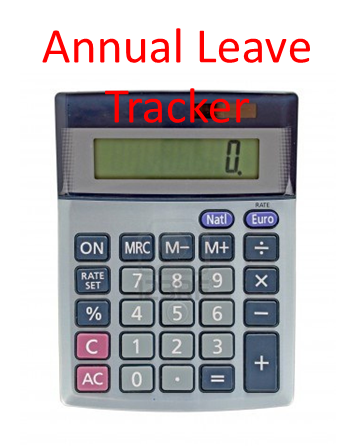Trade Disputes and Industrial Action
 According to the Industrial Relations Act, 1990 a Trade Dispute is any dispute between employers and employees that is “connected with the employment or non-employment, or the terms or conditions of or affecting the employment, of any person”. Industrial Action is collective action taken by employees to compel their employer to “accept or not to accept terms or conditions of or affecting employment.”
Typically, employees decide to take industrial action as a result of a grievance over pay, hours of work, holidays or in support of a co-worker (or former co-worker) who is deemed to have been treated unfairly in some way.
Examples of industrial action may include strike action, a picket, a ‘work-to-rule’ or even an overtime ban. Employers should make every effort to avoid industrial action by maintaining a harmonious working environment because industrial action can be an extremely trying time for all concerned.
A strike is a work stoppage that is caused by the mass refusal of employees to carry out their work activities. Strikes and industrial action in general, are extremely disruptive to a company’s daily operations and can be damaging in both the short and long term. Strikes can last varying amounts of time but even short work stoppages tend to be quite destructive for companies as they can carry negative publicity with them along with the obvious operational drawbacks.
A picket is a form of protest where picketers (those involved in the picket) assemble outside of their workplace, or a relevant area, in an attempt to draw attention to their cause or to discourage others from entering the premises (crossing the picket line). The objective of picketing is to harm the company via a loss of business or through negative publicity. The goal is to persuade the employer to meet picketers’ demands to cease certain activities or introduce a pay increase or reverse a decision regarding redundancies, for instance.
A ‘work-to-rule’ is where employees do the bare minimum during their work hours. They carry out the tasks required by their contract of employment and nothing more in order to slow down productivity. Employees seek to demonstrate that they are valuable to the company and perform tasks that are above and beyond what they are contractually obliged to do on a regular basis.
An overtime ban is similar to a ‘work-to-rule’ in that employees take direction from their contracts of employment. Throughout an overtime ban, employees only work the hours that they are bound by in their contract. As the name suggests, employees refuse to work any overtime.
According to the Industrial Relations Act, 1990 a Trade Dispute is any dispute between employers and employees that is “connected with the employment or non-employment, or the terms or conditions of or affecting the employment, of any person”. Industrial Action is collective action taken by employees to compel their employer to “accept or not to accept terms or conditions of or affecting employment.”
Typically, employees decide to take industrial action as a result of a grievance over pay, hours of work, holidays or in support of a co-worker (or former co-worker) who is deemed to have been treated unfairly in some way.
Examples of industrial action may include strike action, a picket, a ‘work-to-rule’ or even an overtime ban. Employers should make every effort to avoid industrial action by maintaining a harmonious working environment because industrial action can be an extremely trying time for all concerned.
A strike is a work stoppage that is caused by the mass refusal of employees to carry out their work activities. Strikes and industrial action in general, are extremely disruptive to a company’s daily operations and can be damaging in both the short and long term. Strikes can last varying amounts of time but even short work stoppages tend to be quite destructive for companies as they can carry negative publicity with them along with the obvious operational drawbacks.
A picket is a form of protest where picketers (those involved in the picket) assemble outside of their workplace, or a relevant area, in an attempt to draw attention to their cause or to discourage others from entering the premises (crossing the picket line). The objective of picketing is to harm the company via a loss of business or through negative publicity. The goal is to persuade the employer to meet picketers’ demands to cease certain activities or introduce a pay increase or reverse a decision regarding redundancies, for instance.
A ‘work-to-rule’ is where employees do the bare minimum during their work hours. They carry out the tasks required by their contract of employment and nothing more in order to slow down productivity. Employees seek to demonstrate that they are valuable to the company and perform tasks that are above and beyond what they are contractually obliged to do on a regular basis.
An overtime ban is similar to a ‘work-to-rule’ in that employees take direction from their contracts of employment. Throughout an overtime ban, employees only work the hours that they are bound by in their contract. As the name suggests, employees refuse to work any overtime.
Strikes in the news:
 Services Industrial Professional and Technical Union (SIPTU) employees at Dublin Street Parking Services, the vehicle clamping Company in Dublin, are due to be balloted today, Monday, 10th March 2014, on whether or not they should go on strike.
The dispute is over an outstanding pay rise that is owed since 2011. John King, SIPTU Organiser, stated that it is likely that the members will decide to strike over the 2.5% pay rise that they agreed to postpone until 2013 because they are still waiting for it to be applied.
Dublin City Council is threatening to pay the Company less for the service it provides if it does not meet the new target of 60,000 clamped vehicles per year.
Services Industrial Professional and Technical Union (SIPTU) employees at Dublin Street Parking Services, the vehicle clamping Company in Dublin, are due to be balloted today, Monday, 10th March 2014, on whether or not they should go on strike.
The dispute is over an outstanding pay rise that is owed since 2011. John King, SIPTU Organiser, stated that it is likely that the members will decide to strike over the 2.5% pay rise that they agreed to postpone until 2013 because they are still waiting for it to be applied.
Dublin City Council is threatening to pay the Company less for the service it provides if it does not meet the new target of 60,000 clamped vehicles per year.
 SIPTU employees of the DAA and Aer Lingus are also threatening strike action as the dispute over their pension scheme continues. They are due to hold a four hour work stoppage at Dublin, Cork and Shannon on Friday, 14th March 2014 – just as the airport gets busy for the St. Patrick’s Day weekend. This strike could prove to be extremely disruptive to many individuals hoping to travel during the four hour stoppage and for the hours, and potentially days, that follow.
SIPTU employees of the DAA and Aer Lingus are also threatening strike action as the dispute over their pension scheme continues. They are due to hold a four hour work stoppage at Dublin, Cork and Shannon on Friday, 14th March 2014 – just as the airport gets busy for the St. Patrick’s Day weekend. This strike could prove to be extremely disruptive to many individuals hoping to travel during the four hour stoppage and for the hours, and potentially days, that follow.








 Force Majeure Leave is less commonly discussed. The purpose of Force Majeure Leave is to provide limited, paid leave to enable an employee to deal with family emergencies resulting from injury or illness of a close family member. Force Majeure Leave applies where the immediate presence of the employee is urgent and indispensable (essential).
A close family member is defined as one of the following:
Force Majeure Leave is less commonly discussed. The purpose of Force Majeure Leave is to provide limited, paid leave to enable an employee to deal with family emergencies resulting from injury or illness of a close family member. Force Majeure Leave applies where the immediate presence of the employee is urgent and indispensable (essential).
A close family member is defined as one of the following:
 By its nature, an employee will not usually be able to give notice of the need to take Force Majeure Leave. The employee should, however, inform the employer (in writing) of reasons for taking the leave as soon as is reasonable practicable. The employee should provide details regarding the need for the leave and should confirm who the leave was taken in respect of.
Employers are obliged to keep a record of Force Majeure Leave taken by employees.
Employees will be entitled to:
- up to 3 days paid Force Majeure Leave in any consecutive 12 month period; or
- up to 5 days in a 36 consecutive month period.
Absence for part of a day is usually counted as a full day of Force Majeure Leave. Employees are entitled to receive pay for this type of leave. Employers can grant employees more than the number of days outlined above; however, they are not obliged to do so.
Employees are protected against Unfair Dismissal for taking Force Majeure Leave or for proposing to take it.
Death is not covered under Force Majeure Leave – Leave taken when a death occurs falls under Compassionate Leave and this tends to depend on employee contracts as well as custom and practice within the workplace.
By its nature, an employee will not usually be able to give notice of the need to take Force Majeure Leave. The employee should, however, inform the employer (in writing) of reasons for taking the leave as soon as is reasonable practicable. The employee should provide details regarding the need for the leave and should confirm who the leave was taken in respect of.
Employers are obliged to keep a record of Force Majeure Leave taken by employees.
Employees will be entitled to:
- up to 3 days paid Force Majeure Leave in any consecutive 12 month period; or
- up to 5 days in a 36 consecutive month period.
Absence for part of a day is usually counted as a full day of Force Majeure Leave. Employees are entitled to receive pay for this type of leave. Employers can grant employees more than the number of days outlined above; however, they are not obliged to do so.
Employees are protected against Unfair Dismissal for taking Force Majeure Leave or for proposing to take it.
Death is not covered under Force Majeure Leave – Leave taken when a death occurs falls under Compassionate Leave and this tends to depend on employee contracts as well as custom and practice within the workplace. 











 Bullying or harassment isn’t always obvious – in fact it can come in many shapes and forms – some examples are:
•Social exclusion or isolation
•Damaging someone’s reputation through gossip or rumour
•Any form of intimidation
•Aggressive or obscene language or behaviour
•Repeated requests for unreasonable tasks to be carried out
Employers Beware:
Under current Irish employment legislation (The Employment Equality Acts 1998-2011) companies are accountable when it comes to bullying and harassment in the workplace or workplace disputes. It is vital for employers to be mindful of the legislation as companies are answerable for the actions of employees, suppliers and customers even in cases where the company is not aware that bullying or harassment is taking place.
To defend itself a company must illustrate how it did everything reasonably practicable to prevent bullying and / or harassment from taking place in the workplace. The company must also show that when an instance of bullying or harassment occurred the company took immediate, fair and decisive action.
There is a huge risk of exposure if companies do not adhere to the strict Regulations. Those found in violation of the Act may be liable for fines and in severe circumstances imprisonment on summary conviction. Companies can also end up paying out large sums in compensation.
Bullying creates a very hostile work environment and can negatively affect employee performance – It can lead to disengagement and low levels of morale. It can also cause a company to lose key members of staff. Bullying can affect both the safety and the health of employees – this violates the Safety, Health and Welfare at Work Act 2005.
It is abundantly clear that it is in the best interest of all stakeholders to prevent bullying or harassment of any form in the workplace.
In order to avoid bullying and harassment an employer should include harassment-related policies and procedures in the Employee Handbook – A Dignity at Work Policy should be communicated clearly to employees. This will clarify what is expected of employees and what the protocol/repercussions are if bullying/harassment does occur.
Bullying or harassment isn’t always obvious – in fact it can come in many shapes and forms – some examples are:
•Social exclusion or isolation
•Damaging someone’s reputation through gossip or rumour
•Any form of intimidation
•Aggressive or obscene language or behaviour
•Repeated requests for unreasonable tasks to be carried out
Employers Beware:
Under current Irish employment legislation (The Employment Equality Acts 1998-2011) companies are accountable when it comes to bullying and harassment in the workplace or workplace disputes. It is vital for employers to be mindful of the legislation as companies are answerable for the actions of employees, suppliers and customers even in cases where the company is not aware that bullying or harassment is taking place.
To defend itself a company must illustrate how it did everything reasonably practicable to prevent bullying and / or harassment from taking place in the workplace. The company must also show that when an instance of bullying or harassment occurred the company took immediate, fair and decisive action.
There is a huge risk of exposure if companies do not adhere to the strict Regulations. Those found in violation of the Act may be liable for fines and in severe circumstances imprisonment on summary conviction. Companies can also end up paying out large sums in compensation.
Bullying creates a very hostile work environment and can negatively affect employee performance – It can lead to disengagement and low levels of morale. It can also cause a company to lose key members of staff. Bullying can affect both the safety and the health of employees – this violates the Safety, Health and Welfare at Work Act 2005.
It is abundantly clear that it is in the best interest of all stakeholders to prevent bullying or harassment of any form in the workplace.
In order to avoid bullying and harassment an employer should include harassment-related policies and procedures in the Employee Handbook – A Dignity at Work Policy should be communicated clearly to employees. This will clarify what is expected of employees and what the protocol/repercussions are if bullying/harassment does occur.




